- Know about the centuries old cultural ties between Himachal Pradesh and Tibet.
Himachal Pradesh
is a unique frontier state in many ways, as it forms a transition zone for
three strands of similar but different cultural zones. The links with other
hill regions of North-west India and the state of Uttarakhand are still well
identified and discussed.
In contrast, it
feels like we have almost forgotten how this state also had, and continues to
have a cultural continuum, with Ladakh and Tibet. This continuum is not just
driven by the religious strand but also the deep cultural ties that arose from
it.
Kinnaur region,
where Hindus and Buddhists live side by side in a syncretic culture, is where
it is rather difficult to find divisions. The food, dressing, festivals - there
is hardly any difference among the people.
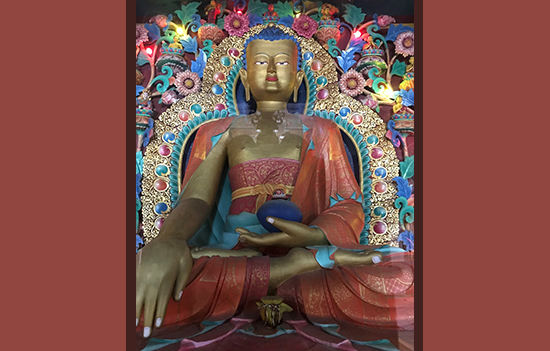 The main Buddha murthi at Kungri Monastery, Spiti Valley. Pic by Neeraj Jain.
The main Buddha murthi at Kungri Monastery, Spiti Valley. Pic by Neeraj Jain.The region houses Kinnar
Kailash, where it is believed by Hindus that Shiva resided briefly,
which is sacred to both Hindus and Buddhists, much like how Mount
Kailash in Tibet is sacred as the abode of Shiva to the Hindus as it
is the abode of the Buddha Cakrasamvara. An example of this syncretism is in
the Yulla Kanda, a temple that is sacred to both Hindus and Buddhists in Kinnaur.
Located in the middle of a lake, this Krishna temple is equally adorned by
Buddhist prayer flags. To see video of the Highest
Krishna Temple in the world
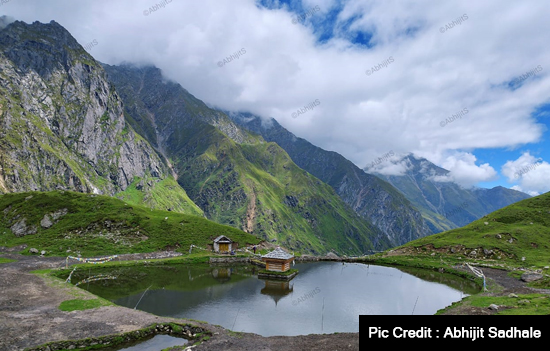 Highest Krishna Temple in the world
Highest Krishna Temple in the worldLahaul and Spiti, of course, as a region was divided between the rule of Chamba and Kullu in alternate times and Tibetan and Ladakhi rule. Thus, these regions formed a confluence zone, as recorded by the Punjab District Census Hand Book of Lahaul and Spiti. Earliest records of the place can be seen in Hieun Tsang’s writings.
As a result of this confluence and melting zones, we see a transition starting towards the Ladakh-Tibet region. Languages spoken in these region - Kinnauri, Lahauli and Spiti, are all part of the Burmese Tibetan family. Written in
Bhoti script, an offshoot of Siddham, we see significant similarities with old Tibetan.
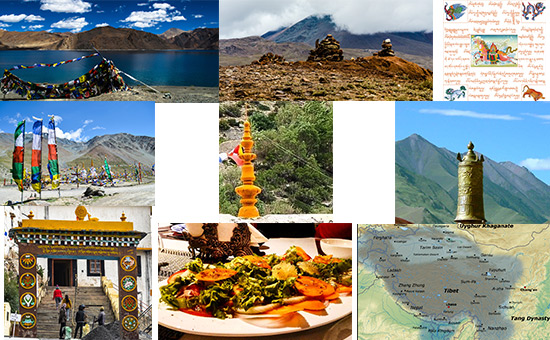 Examples of Tibetan Culture in Himachal/Ladakh
Examples of Tibetan Culture in Himachal/LadakhAlso read Tibetan
Culture and Traditions in Ladakh
Another evidence
of the cultural continuum is the traditional dressing in Kinnaur and its close
proximity to those of the Brokpas and the Ladakhi stock, particularly so in the
headgears that women adorn on special occasions like marriages. Marriages among
these regions was rather common, and it was not unusual to see people also
visiting sacred monasteries by traveling within these regions and to Tibet too.
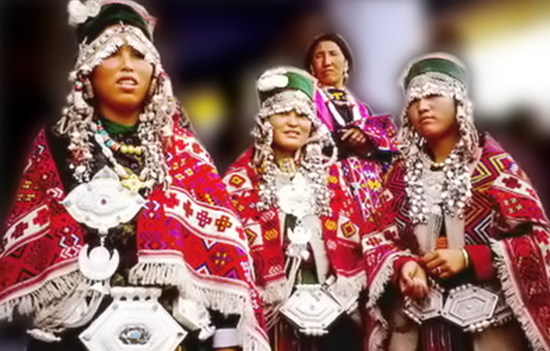 Kinnauri Dress Credits
Kinnauri Dress Credits 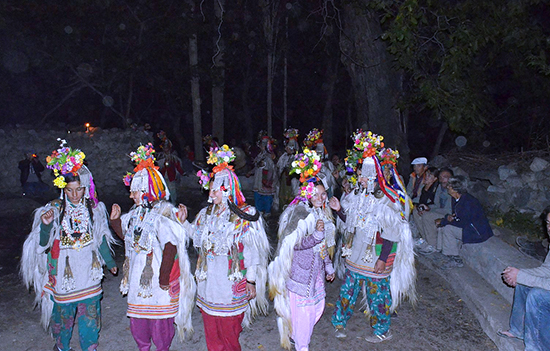 Broka Women and their wonderful dressing Credits
Broka Women and their wonderful dressing Credits
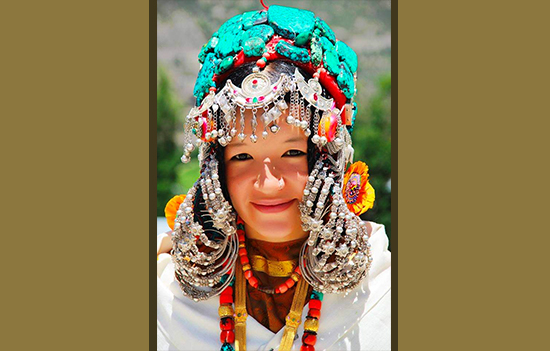 Lahauli Woman Credit Twitter Ajay
Banyal
Lahauli Woman Credit Twitter Ajay
BanyalTraditional
Kinnauri and Lahauli getups of women have great similarities with the Ladakhi
dresses, especially those of Brokpas.
The links to Kullu
were well known for centuries later as well. Kullu Dussehra festival used to
see acrobats and performers coming from Lahaul, Spiti and Kinnaur coming to
Kullu to perform. To see 1951 video
The cultural belt
of course was not just restricted to the bordering regions alone. Rather, the
extent went deep into the state of Himachal Pradesh. As the former Deputy
Speaker of the Tibetan Parliament in exile Acharya Yeshi Phuntsok had once remarked:
“Indo-Tibet shared various aspects of relationships, from the two countries’ shared geographical borders to its sociocultural, language and tradition to commerce. Pandits from India and Lotsawa (translators) from Tibet travelled to and fro from the two countries from the 7th to 17th century. The relationship shared between the two is etched deeply in the history, especially with Himachal Pradesh. Satluj river, known in Tibet as Langchen Khabap, flows from Tholing in Tibet to Kinnaur and Rampur in Himachal Pradesh and Punjab.”
Also read Indian
roots of Tibetan Buddhism by art historian Benoy Behl
The links of
Himachal Pradesh to Vajrayana Buddhism practised in Tibet and the adjoining
areas in India are direct and significant. They trace back to Acharya Padma Sambhava also known as
Guru Rinpoche in the Tibetan sources. Being the Vajra Master or Vajra Dharin, he was a tantric Buddhist who is widely believed to have taken Vajrayana to Tibet. Also said here, “Padmasambhava (750-800 A.D.) is said to have introduced Vajrayana Buddhism in Tibet and carried with him some Tantric texts from India.” 1 Pg. 721
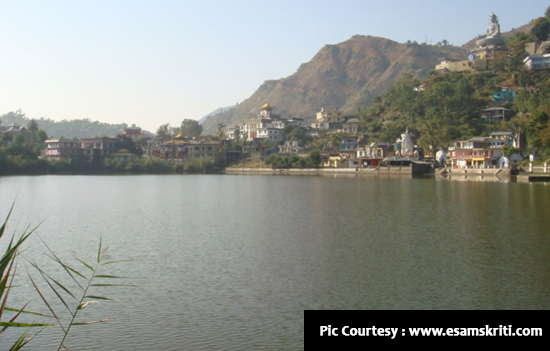 Rewalsar Lake close to Mandi i.e. sacred to Buddhists and Hindus. Pic Vikram A.
Rewalsar Lake close to Mandi i.e. sacred to Buddhists and Hindus. Pic Vikram A. Among Tibetans, Mandi was always known as Zahor, from where the great Guru Padma Sambhava had come at the behest of the then Tibetan king Trisong Detsen somewhere between 750-800 A.D. Tibetans used to come for pilgrimage to the Rewalsar Lake in Mandi, which they called Padmacan or Co Pema. The Vajrayana Buddhists believe that the spirit of Padma Sambhava, whom they worship, resides on the lake's floating islands. This lake is equally holy to the local Mandi residents, identified as the residence of Lomasa Rishi. See
album of Rewalsar Lake
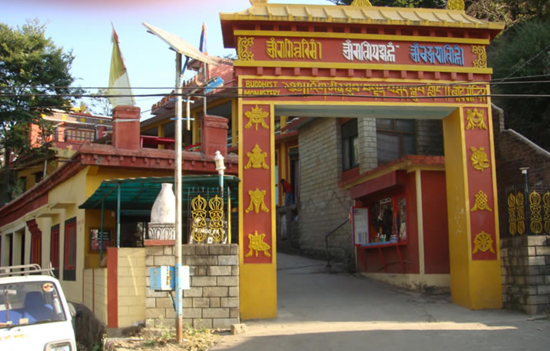 Buddhist Monastery at Rewalsar Lake in Mandi district. Pic Vikram A.
Buddhist Monastery at Rewalsar Lake in Mandi district. Pic Vikram A. It is also said that Mandi is named after Mandarava, one of the two principal consorts of Padma Sambhava, a local princess and later an important disciple of the Guru. Her temple, sacred equally to both local Hindus as well as Tibetan Buddhists, still stands today near the banks of the Beas River in Mandi, and is famous by the name of Mata Kuan Rani's temple. It was a major
pilgrimage site for Tibetan Buddhists before the Chinese invaded Tibet
and sealed off the border in 1949, since which their numbers have significantly
fallen.
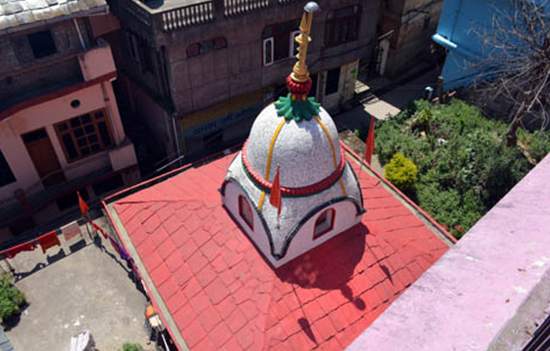 Mata Kuan Rani Temple, Mandi. Pic by Birbal Sharma Photographer.
Mata Kuan Rani Temple, Mandi. Pic by Birbal Sharma Photographer. 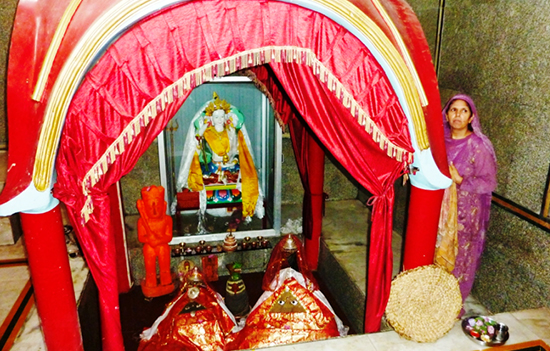 Inside Temple Credits
Inside Temple Credits
Similarly, it
remains a fact that Tibetans used to travel across Rampur Bushahr. Rampur was a
critical trading centre node along the lines. Evidence to show the movement of
the Tibetans and their interactions with locals were seen as late as the
nineteen fifties, even archived in footage form. Knick-knacks, jewellery,
vessels made of metal - things like these were vital for the Tibetans who were
largely nomadic in nature. To see video
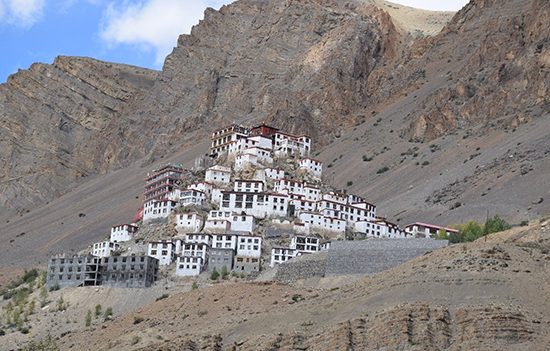 Ki Monastery, Spiti Valley. Pic by Neeraj Jain.
Ki Monastery, Spiti Valley. Pic by Neeraj Jain.Founded by Dromton
(1008-1064) Ki is one of the oldest monasteries in Spiti and a large training
centre for monks. It has a rare collection of Thangya Paintings and old musical
instruments. Also read Monasteries of
Himachal Pradesh
The century old
cultural relations are all today but forgotten by the mainstream of India. The
deep ties with Buddhism and the syncretic, intertwined cultures of the region
however continue to remind us of the traditional bonds that India and Tibet had
and that Hindus and Buddhists continue to have.
Is it because of
such close cultural ties between Himachal and Tibet that the Tibetans chose to
settle down in Dharamshala? To see
album of Mcleodganj According
to sources the Tibetans moved from Mussoorie to Dharamshala in 1960 because the
Government of India wanted them to be in a remote location.
A thriving border trade once existed. It exists in some form today. “For a few months every year beginning June when the snow line recedes, Kinnauri traders through the pass after obtaining clearance from an ITBP border check-post, and cross over to the other side to sell their products, a district official said. They mostly exchange woollen and handloom items such as blankets and carpets. Before India’a independence, Tibetan traders entered Himachal via Shipki La and travelled up to Rampur Bushahr, especially during the Lavi fair, using the old Hindustan Tibet road built in mid-nineteenth century. The trade route was closed following the Indo-China war in 1962. ” Source
Indian Express
So also this lady
in a village close to Munisyari, Kumaon Uttarakhand stated that the raw wool
comes for her Pashmina Shawls comes from Tibet but lamented it is no longer
like pre-1950 times where traders moved freely.
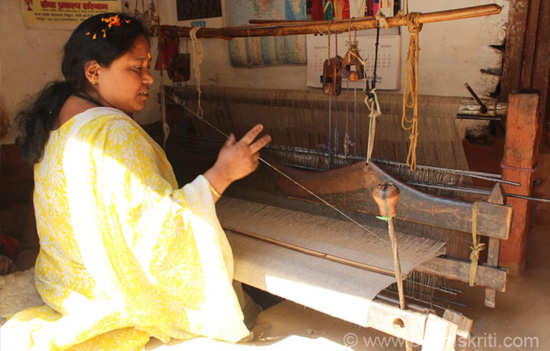 Pic by S Nayyar.
Pic by S Nayyar.
References
1. The Cultural
Heritage of India Vol 5 published by the Ramakrishna Mission Institute of
Culture
To hear author video (1 hour) on Himachal’s unique culture
Also read
1. What on earth is Vajrayana – Tibetan Buddhism
2. Album
Thiksey Monastery Ladakh
3. Album
Hemis Monastery Ladakh
4. Spiti
Valley Travelogue
5. Album
Diskit Monastery Ladakh
6. Album
Kullu Dussehra
7. Album
Hadimba Temple
8. Album
Mcleodganj